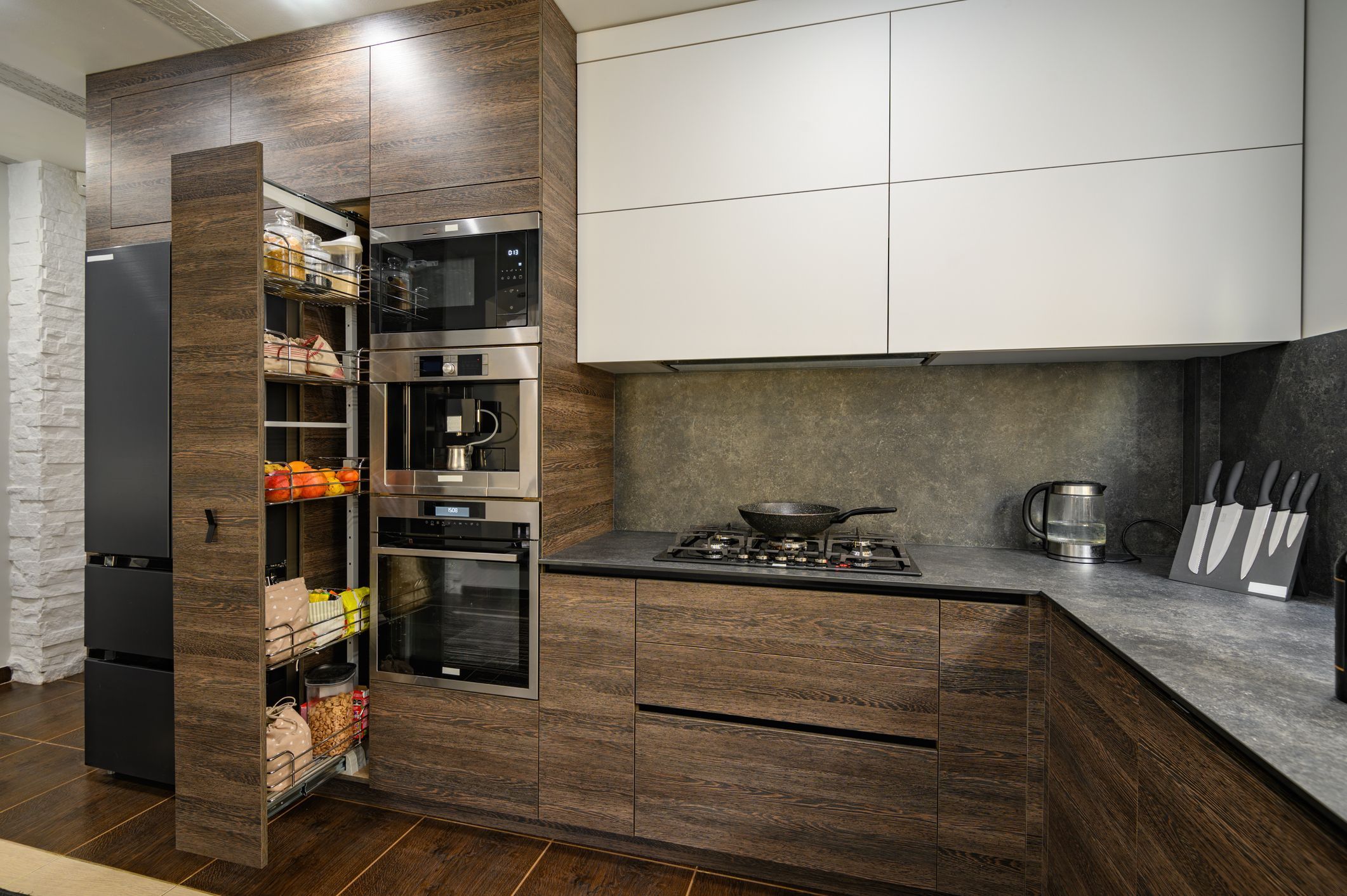
Kitchen Storage Ideas: Smart Solutions for Clutter-Free Cooking
May 14, 2025Making use of vertical space: tips that work on-site
Kitchens are packed horizontally, but often underused vertically. If you’re applying adhesive film to tall cabinets or fridge panels, point out any unused wall height your client could reclaim.
Some practical suggestions you can offer:
Install floating shelves above splashbacks or alongside upper units
Use hook rails or magnetic strips on the side of appliances or cabinet walls
Suggest a ceiling-mounted utensil rack above a central island — out of the way, but always accessible
Recommend tall open shelving for frequently used cookware in small kitchens
If you’re cladding a tall wall unit, make sure the film you choose resists heat and steam near cooking zones — especially important above hobs.
Inside cupboards: smart layout ideas for better visibility
You’ve probably seen it a hundred times: beautiful fronts, but behind them, chaos. Pots stacked randomly, mismatched Tupperware, food packets wedged wherever they fit. Recommend to your client that a neat finish deserves a neat interior — and it’s easy to achieve.
Some installer-approved layout tricks:
Use adjustable trays or tension-mounted risers to split tall cupboard spaces
Add pull-out baskets that slide like drawers — these are especially handy under sinks
Recommend transparent tubs or containers for small food items
Apply interior PVC wrap for clients who want inside and outside matched
Pro tip: Make sure to clean and prep inside surfaces properly before any interior wrap. A degreased, lightly abraded melamine surface ensures adhesion and longevity.
When drawers are better than doors (and how to upgrade them)
For tight spaces, drawers beat deep cupboards every time. If you're working on a refit, suggest replacing certain lower cabinets with wide drawers — easier to access and simpler to organise.
Installers can offer:
Vinyl-wrapped drawer fronts that match wall cladding or contrast with matte worktops
Integrated drawer pull systems, avoiding bulky handles that disrupt the finish
Retrofit options using adhesive-backed PVC panels to refresh older drawer boxes
Always remind clients: deeper drawers allow layered organisation. Combine shallow top drawers for utensils with deeper ones below for pans or appliances.
Easy-to-install storage hacks for film installers
If you're not redoing a full kitchen but applying film to key zones, you can still offer practical add-ons your client can install after you leave.
Recommend:
Self-adhesive hooks that won’t damage your wrap
Under-shelf hanging baskets for dry goods
Slimline pull-out rails that install inside cabinet walls
Inside-door organisers — just make sure they don’t rub against your applied surfaces
Whenever possible, brief the client on where not to drill or screw, especially after film application. If extra fixings are needed, advise pre-drilling before wrap application or using structural adhesives rated for PVC.
What to advise clients before or after a kitchen refit
Sometimes, the most useful tip isn't about the material — it's about the timing. Clients often think about storage after the visual upgrade. Your role as a pro is to bring it up beforehand, when changes are easiest to make.
Ask the right questions:
Are they always hunting for space in a certain area?
Do they want more open shelving, or more closed storage?
Would they like internal storage to match the exterior aesthetic?
And share a few no-nonsense truths:
Don’t overdesign — open shelves look good, but only if the user is tidy
Avoid wrapping warped or sagging cabinet bodies — fix the structure first
Go for uniformity — three different white finishes in one kitchen? It rarely works
Using Cover Styl finishes to combine style and storage efficiency
A smart layout is only half the job — finish matters too. With Cover Styl, installers get access to a range of finishes that work both visually and functionally.
Recommendations by usage:
Matte wood or stone textures work great on drawer fronts — less prone to fingerprints
Gloss or brushed metallics suit appliance cladding and island bases
Textured wood grain adds warmth to tall units and vertical storage walls
Solid whites or creams help reflect light in narrow kitchens
If you’re working on a small-space project, favour light tones and minimal grain to keep the space feeling open.
As a professional installer, you're not just transforming surfaces — you're enhancing how a kitchen works. Storage and function go hand in hand with design. Share these tips with your clients and elevate your value on every install.